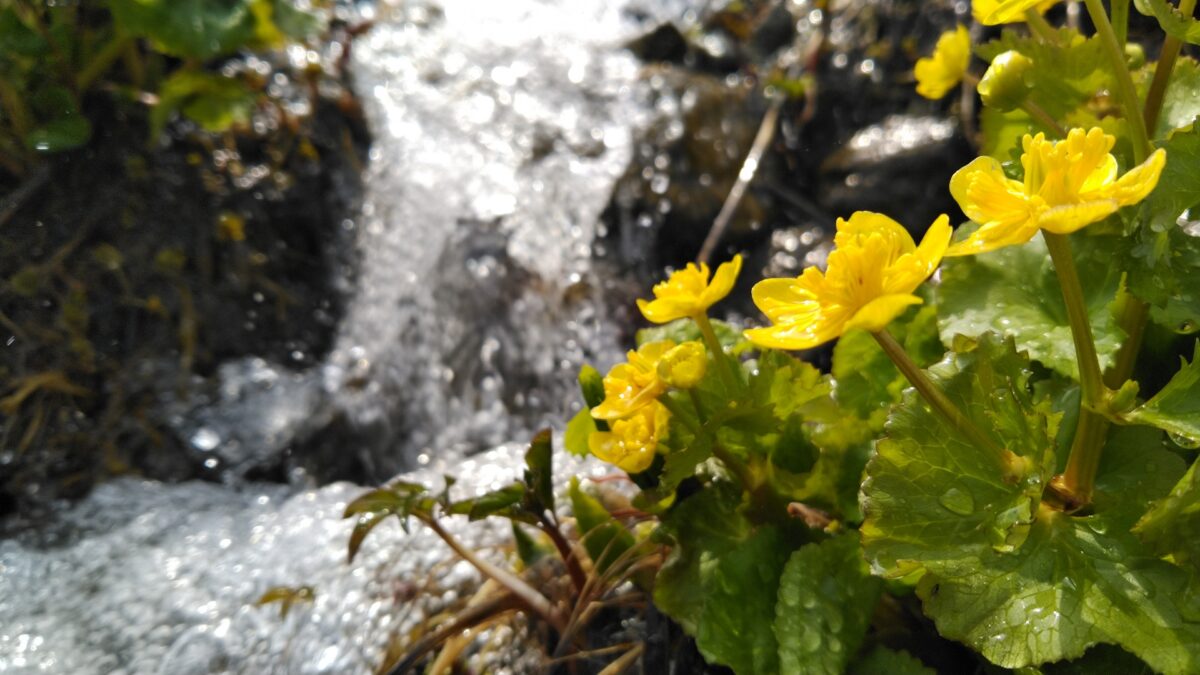Rainwater and the 40 solar terms: Learning about natural rhythms and their significance from Japanese customs

『 This article is… 』
This page introduces the traditional culture and regional characteristics related to rainwater sobriety in Japan. For those who love travel and are interested in culture and nature, we explore rainwater-related customs across Japan, from Hokkaido’s thaw festival to Okinawa’s spring festival. Readers can understand Japan’s rich natural environment and cultural diversity, and feel a deep connection with nature through the changing seasons.
The intersection of Japan’s nature and culture: rainwater and the 40 solar terms
Hello, I’m Kasumi, a travel web writer. Having traveled all over Japan, the rich nature and deep culture of each region remains in my heart. This time, I would like to focus on rainwater, one of Japan’s 40 seasonal seasons. Rainwater is an important seasonal sign that heralds the arrival of spring. I will unravel its history, customs, origin, regional characteristics, and current meaning, using my own experiences. I hope that by reading this article, you can feel the breath of Japan’s nature and culture, and understand the deep meaning of rainwater.
First, I will explain in detail what the term “rain water” means, its historical background, and its meaning. I would like to touch on the customs related to rainwater found in various parts of Japan and their influence on modern times. Now, let’s go on a journey through Japan’s four seasons together.
- What is rainwater conservation? – Exploring its history and meaning
- Rainwater and regional customs – Colors from various parts of Japan
- Modern characteristics and significance of rainwater – Modern Japan coexisting with nature
- Rainwater and its regional characteristics – expressions of moderation in various parts of Japan
- Japan’s view of nature seen through rainwater – sense of season and environmental awareness
- Learning about harmony between Japan’s nature and culture through rainwater conservation
- Kasumi point
What is rainwater conservation? – Exploring its history and meaning
Historical background of rainwater sobriety
The 40 solar terms have been deeply rooted in Japan’s annual events and natural rhythms since ancient times. One of these, rain water, is the second seasonal season after the first day of spring, and it occurs around February 18th to 20th every year. This period marks an important time when the seasons change from winter to spring. This concept, which came from ancient China, has served as a guideline for nature observation and life throughout Japan’s long history.
What is rainwater?
The name rainwater comes from the natural phenomenon in which snow melts and turns into rain. This is the season when the cold of winter begins to ease across Japan, snow and ice melt, and the amount of water in rivers increases. In ancient Japan, which was an agricultural society, this period was considered to be a period of preparation for farming and an important turning point in accepting the blessings of nature.
The meaning of rainwater and its influence on modern times
In modern times, rainwater has a significance as a sign of the change of seasons, but for many Japanese people, it has less of a direct impact on their daily lives. However, the traditional events and festivals held during this period play an important role in forming local communities and passing on culture to the next generation. In addition, rainwater continues to teach us many things as an opportunity to reconsider living in harmony with nature.
What I have noticed while traveling around Japan is the beauty of the changing landscape during the rainy season. The sound of a river flowing with melting snow and the warmth of the spring air are filled with expectations for the new season. The changing seasons in Japan have a unique charm in every region, and I think rainwater moderation is a wonderful time to symbolize this.
Rainwater and regional customs – Colors from various parts of Japan
Local rainwater customs
Each region of Japan has its own customs and festivals related to rainwater. These events are closely tied to the natural environment and history of the region, and richly express the character of each region. For example, in the snowy regions of Hokkaido, festivals are held during the rainy season to pray for the snow to melt, and people look forward to the arrival of spring.
Regional example: Tohoku thaw festival
In the Tohoku region, many traditional festivals are held during the rainy season to pray for the snow to melt. It expresses the joy of the arrival of spring after overcoming the harsh winter that is unique to snowy countries. These festivals are full of lively events that unleash the energy that has been stored up over the winter, and they also serve as an opportunity to strengthen ties within the local community.
Kyoto’s atmosphere and rainwater
On the other hand, in Kyoto, a city steeped in history and tradition, the rainy season has a different flavor. Plum blossoms begin to bloom in the streets of the ancient capital, heralding the arrival of spring, and events symbolizing rainwater are held quietly. Rainwater has a special meaning in Kyoto, as it is a graceful time when we can feel the change of seasons.
personal experience
During my travels, one thing that particularly impressed me was the way rainwater was used in small fishing villages in Kyushu. There are small festivals celebrating the bounty of the spring sea, where locals celebrate the new season by sharing the bountiful bounty of the sea. In this way, rainwater takes on different expressions in each region, reflecting Japan’s diverse culture and natural charm.
Modern characteristics and significance of rainwater – Modern Japan coexisting with nature
A modern interpretation of rainwater
In modern Japan, the four seasons are viewed not only as an old custom, but also as an opportunity to think about harmony with nature. Rainwater is not just a sign of the change of seasons, but also an opportunity to raise awareness of the environment and listen to the rhythms of nature. In urban areas, even people who live far away from the natural environment can sense the changing seasons through rainwater.
Rainwater and modern life
In modern society, there are fewer specific events related to rainwater, but for example, in the field of agriculture, climate change during this period has an important meaning. For farmers preparing for spring crops, rainwater is a critical time to provide the moisture needed for crop growth. In addition, meteorological data during the rainy season is an important indicator in research on weather forecasting and climate change.
Awareness of harmony with nature
In modern Japan, as awareness of environmental issues increases, awareness of being close to the cycles of nature is once again attracting attention. Rainwater conservation coincides with the time when plum blossoms begin to bloom in parks and gardens in urban areas, reminding many people of the beauty and importance of nature. In this way, even in modern times, rainwater provides an opportunity to promote coexistence with nature.
personal impressions
Having traveled all over Japan and experienced the sobriety of rainwater in many places, I deeply feel the richness of the soul brought about by the changes in nature during this time of year. Away from the hustle and bustle of the city, you can enjoy the beauty of Japan’s changing seasons once again by watching the plum blossoms bloom quietly during the rainy season. Rainwater provides modern people with a valuable opportunity to take a break from their busy daily lives and listen to the rhythms of nature.
Rainwater and its regional characteristics – expressions of moderation in various parts of Japan
Characteristics of rainwater by region
Rainwater takes on different expressions across Japan. Because the climate and culture differ depending on the region, the landscape and customs brought about by rainwater also vary greatly. In Hokkaido, the snow is still deep, but we are looking forward to the thaw, and in Okinawa, we are already starting to feel the warmth of spring. This season reflects Japan’s diversity and rich natural expression.
Harmony between city and nature
In metropolitan areas, the rainy season is a great opportunity to experience changes in nature. For example, in Tokyo, plum blossoms blooming in parks and gardens signal the end of winter and the beginning of spring. Even in urban areas surrounded by buildings, you can feel the changing seasons through rainwater.
The arrival of spring in the region
On the other hand, in rural areas, unique traditional events are often held during the rainy season. In areas with thriving agriculture, this is the time when preparations for spring crops begin, marking the start of a new year’s agricultural work. In addition, local festivals and events are important cultural events to celebrate the arrival of spring.
personal experience
What struck me most as I traveled throughout Japan was the different reactions to rainwater in each region. In the north, there is joy in the snow that melts with the arrival of spring, and in the south, there is joy in feeling the warmth of spring early. From these experiences, I feel that rainwater is a blessing that symbolizes the diversity of Japan’s nature and culture.
Japan’s view of nature seen through rainwater – sense of season and environmental awareness
Japan’s four seasons and the position of rainwater
Japan has four distinct seasons, and each season has its own beauty. Rainwater marks a particularly important juncture in this unique seasonal cycle, which transitions from winter to spring. At this time of year, nature begins to wake up and signals the arrival of a new season.
Rainwater and Japanese life
In the lives of Japanese people, rainwater is an important time to feel the rhythm of nature. For people involved in agriculture, this is an important period that affects the growth cycle of crops, while in urban areas it is a valuable opportunity to experience the changes in the seasons firsthand. Rainwater also provides an opportunity to reaffirm the importance of coexisting with nature and protecting the environment.
Rainwater and environmental awareness
In modern Japan, rainwater also serves as an opportunity to raise environmental awareness. Nowadays, due to the effects of climate change, we are increasingly seeing changes in the seasons that are different from those in the past, so carefully observing changes in nature during the rainwater season is important for deepening our understanding of the global environment.
personal opinion
From my experience traveling all over Japan, I can say that saving rainwater does not only signal the moment when the seasons change, but it also encourages dialogue with nature and helps us pay attention to the global environment in our daily lives. This means that it will give you an opportunity to focus on your goals. Whether in the city or the countryside, rainwater reminds us of the beauty of the season and our deep respect for the environment.
Learning about harmony between Japan’s nature and culture through rainwater conservation
Through this series, we have explored the meaning of rainwater moderation and how it influences Japanese culture and views of nature. Rainwater is more than just a seasonal change, it fosters different landscapes and cultures across Japan. This solar term reflects how the Japanese lived in harmony with nature, and continues to have important significance even in modern times.
Harmony with the rhythm of nature
Rainwater teaches us the importance of living in accordance with the cycles of nature. From agriculture to urban life, the way Japanese people adapt to the changing seasons shows their deep connection to nature.
Cooperation with local culture
Rainwater customs and festivals that are rooted in each region are based on the natural environment and history of that region. These events play an important role in strengthening local community bonds and passing on culture to the next generation.
Improving environmental awareness
In modern times, rainwater also contributes to improving environmental awareness. Rainwater reminds us of the importance of confronting the effects of climate change and respecting natural cycles.
personal impressions
As someone who has traveled to all 47 prefectures in Japan, rain water is a particularly emotional time of Japan’s four seasons. Through this season, I was able to experience the harmony between Japan’s rich nature and culture, and feel the transition to a new season. Witnessing the different rainwater landscapes in each region gave me an opportunity to appreciate once again the diversity and richness of this beautiful country.
To conclude, I am pleased to have been able to share with you the unique charm and significance of rainwater in Japan’s four seasons. We hope that this article will give you a sense of the depth of Japan’s culture of coexisting with nature. I look forward to sharing new discoveries and excitement with you on my next trip.
Kasumi point
Hokkaido: Festival celebrating the thaw
Kasumi Point: Hokkaido is characterized by festivals held during the rainy season to pray for the snow to melt. This festival reflects the feelings of the local people as they wait for the arrival of spring after a long winter. The joy of overcoming the cold, which is unique to snowy countries, plays an important role in strengthening the bonds of local communities and preparing us for a warm spring.
Tokyo: Plum blossoms blooming in a city park
Kasumi Point: In a big city like Tokyo, you can feel the conservation of rainwater through the blooming plum blossoms in city parks. Surrounded by buildings, plum blossoms herald the arrival of spring, symbolizing the harmony between the cycles of nature and city life. This can be said to reflect the mental landscape of modern people who seek coexistence with nature.
Kyoto Prefecture: Plum Festival in the Ancient Capital
Kasumi Point: Kyoto, which has a rich history, is known for its plum festival, which is timed to reduce rainwater. This festival, which blends tradition and natural beauty, is a quiet but spectacular way to celebrate the change of seasons. Kyoto’s Plum Festival is known as a unique event that combines traditional Japanese culture and natural beauty.
Nara Prefecture: Events that herald the arrival of spring
Kasumi Point: In Nara, an ancient event that heralds the arrival of spring is held on Amamizu. These events reflect Japan’s ancient culture of worshiping nature and emphasizing the changing seasons, and give a sense of Nara’s rich history and natural environment. Here, a lifestyle rooted in the cycles of nature is still valued.
Okinawa Prefecture: A festival celebrating the bounty of the spring sea
Kasumi Point: Okinawa’s rainwater is expressed in festivals celebrating the bounty of the spring sea. During this time, local fishermen pray for a safe and bountiful catch in the new fishing season. This festival in Okinawa demonstrates the deep connection between the sea and its people, and reflects its unique geographical and cultural background. The local lifestyle that coexists with the sea is vividly expressed through the rainwater festival.








